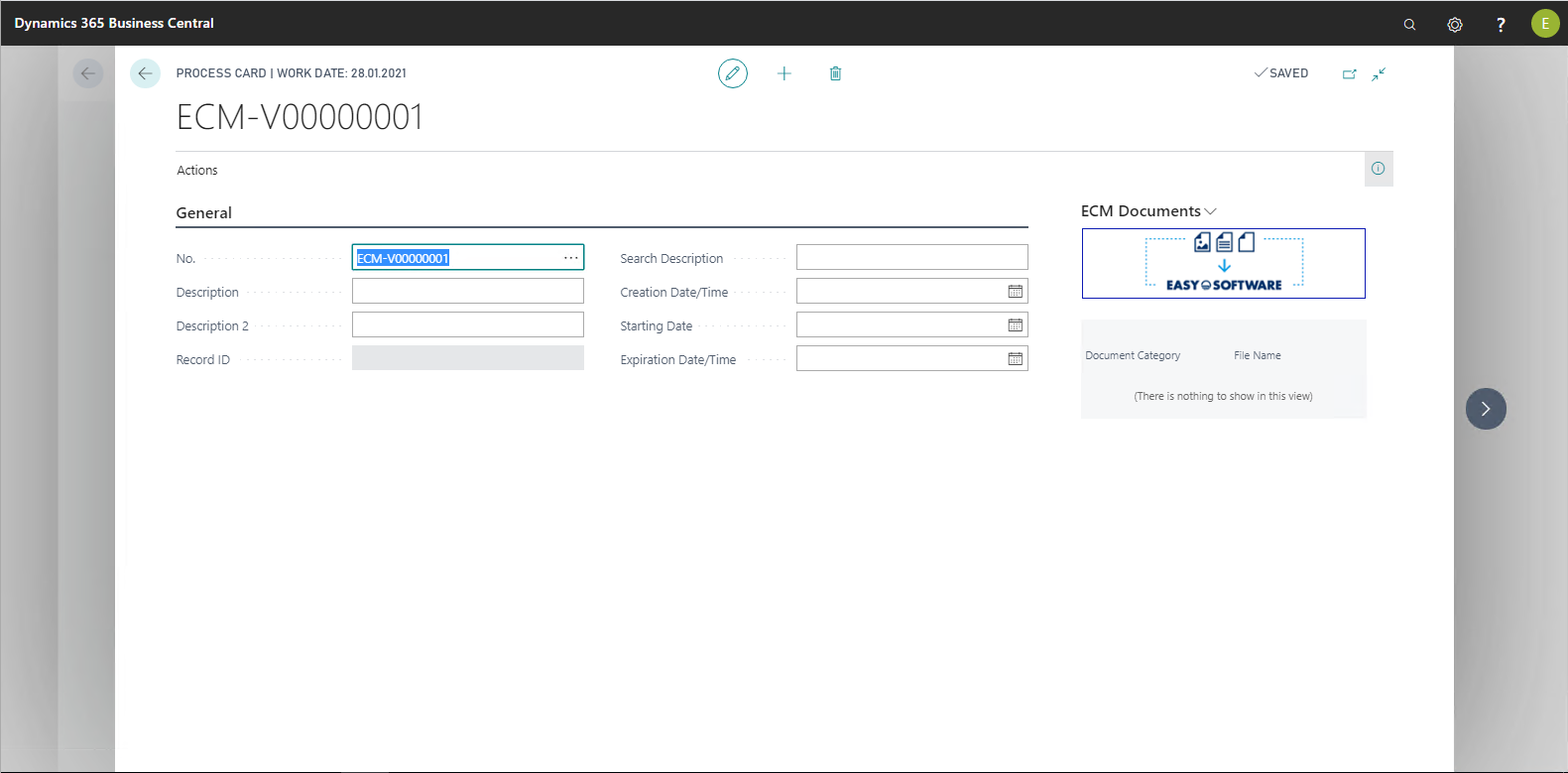ECM Processes and Process Types
Processes

The search term "ECM process overview" not only lets you search/retrieve processes, it also lets you create them manually. As a rule, this is not required, since all processes are generated automatically via the process numbers by Microsoft Dynamics 365 Business Central. External documents, such as purchase invoices, are, by default, also assigned to an internal process.
Processes can be created when documents were generated entirely outside of the Microsoft Dynamics 365 Business Central document flow, such as important correspondence letters. For each document with the relevant origin, for each document type, or for a group of documents related by content, a process can be manually generated to which the individual documents can be assigned. The organization of such processes is up to the user and should therefore be fine-tuned within the company.
Process types

Process types are needed in certain configurations in order to provide imported or scanned documents automatically with the required data for document entries and the EASY Archive / Microsoft SharePoint metadata.Scanned documents only include the barcode ID, which represents a connection to a document in Microsoft Dynamics 365 Business Central. If the scanned document is assigned to a document or process, then additional data from Microsoft Dynamics 365 Business Central can be assigned to it.
Example
A purchase order is available as an internal document. An associated purchase invoice is scanned and then assigned to the same process as the order. EASY for Dynamics 365 BC is then able to transmit all necessary information from the order to the purchase invoice. This reduces manual data input to a minimum, replacing it with an automated data transfer between the internal and external documents of a process.
As a rule, this data transfer is trouble-free, because all internal records of a process are coherent in their data structure: they refer to the same business partner, they have the same delivery address, etc. Here it is irrelevant if the external document is populated with the data from quotation, order, or posted invoice. If such data consistency can basically be assumed in the internal documents, a definition of process types is not necessary. If such data coherence does not exist, e.g. because documents from customers and vendors are combined into a single process, or because e-mail traffic or other documents are stored in addition to the usual Microsoft Dynamics 365 Business Central documents, you will have to determine which internal documents should be used to supplement external scanned documents. In this case, the document must be given a hierarchy. More often than not, two process types are enough for this purpose, e.g. using the names "primary" and "secondary". Which process type is used for the respective documents to be exported can be set in the Process Type field of the document definitions. The Process Type Filter field is used to set which process type should be used to enrich the external documents.
Therefore, process types are required to identify the primary document type(s) within the various internal document types of a process, and to distinguish them from the downstream or secondary document types. Only primary documents are then used for data supplementation of external documents. For this, a few process types which have no content reference to the document types but only give them a hierarchy are sufficient.